
Fans of Pakistani cricket were not able to watch their team playing at an international level, but enjoyed the same emotional feelings through other sports; at the biggest stages including FIFA World Cup and Wimbledon. Aged and youngsters recalled the emotions shared by Pakistani cricket players in the form of nail biting and enthralling performances, engulfing the feeling of joy, which is the main objective of sports.
Coming back to cricket, however, the expectations were high because it was a test for cricket to prove that it does not lag behind the world’s leading sports, where excitement, skill and competition matter the most. Despite the fame of unpredictability, the underrated player, Younus Khan, once again proved his worth – he stepped-up his rating and kept the fans faith in the game steady; his tedious innings were full of thrill, joy and pure delectation.
Younus is a peerless blend of talent, skill, stamina and experience; the ingredient of a top-class player. And against Sri Lanka, all these components played an active role in the taste of his innings. Batting at number three requires circumspect, switching between defence and attack. And for a team whose openers depart quickly, number three plays an anchoring roll; which Younus seemed to know very well. He is now the second highest away runner, after Sachin Tendulkar, as he managed to score his 24th century in Sri Lanka.
 Younus’s career has gone through many off-the-field interruptions, including fights with the chairman that kept him away from action for more than a year and some out of form periods that hurt his reputation as the leading Test batsman. Another paradigm was the recent injustice done to him when, normally, listed as an A-category player, Younus, was demoted to B-category. Only five players were at the top, including captains of both formats: experienced Shahid Afridi along with, the world’s number one One-Day International (ODI) player, Saeed Ajmal. Despite being the most technical and elegant batsman of 21st century, and especially after the retirement of great players, like Jacques Kallis, Rahul Dravid and Tendulkar, Younus Khan’s presence in top category was definitely missed. Only Younus Khan and Shivnarine Chanderpaul, of West Indies, are the ones fans relish to watch.
Some serious feedback from fans, former and present cricketers, and Younus himself, was given to this announcement and Pakistan Cricket Board (PCB) had to eventually change their decision. Younus proved his worth in the first match played and is the only player in the current line-up of high standard in technique, is resilient and is even the fittest amongst them all.
[caption id="" align="alignnone" width="410"]
Younus’s career has gone through many off-the-field interruptions, including fights with the chairman that kept him away from action for more than a year and some out of form periods that hurt his reputation as the leading Test batsman. Another paradigm was the recent injustice done to him when, normally, listed as an A-category player, Younus, was demoted to B-category. Only five players were at the top, including captains of both formats: experienced Shahid Afridi along with, the world’s number one One-Day International (ODI) player, Saeed Ajmal. Despite being the most technical and elegant batsman of 21st century, and especially after the retirement of great players, like Jacques Kallis, Rahul Dravid and Tendulkar, Younus Khan’s presence in top category was definitely missed. Only Younus Khan and Shivnarine Chanderpaul, of West Indies, are the ones fans relish to watch.
Some serious feedback from fans, former and present cricketers, and Younus himself, was given to this announcement and Pakistan Cricket Board (PCB) had to eventually change their decision. Younus proved his worth in the first match played and is the only player in the current line-up of high standard in technique, is resilient and is even the fittest amongst them all.
[caption id="" align="alignnone" width="410"] PHOTO: AFP[/caption]
Pakistan’s fast bowling attack is relatively young, as compared to batting line up of the mighty Lankans, but this time we have Waqar Younus as the head coach. His experience, both as super star fast bowler and a successful coach, will help give Junaid Khan and Mohammad Talha the confidence needed to go through the opposing line-up.
The series is going to be a memorable one for Lankans. Are they going to win? It is the last series of their most famed and respected star batsman, Mahela Jayawardene; the batsman who anchored the Lankan ship after the retirement of previous greats. But will he be able to perform the same in his last series? So far it looks like he will leave no stone unturned to put a memorable end to his majestic career. When you have batsmen like Younus and Jayawardene in the same match, you get the same sense of satisfaction you would get when you used to watch cricket back in the day – in the glory days.
PHOTO: AFP[/caption]
Pakistan’s fast bowling attack is relatively young, as compared to batting line up of the mighty Lankans, but this time we have Waqar Younus as the head coach. His experience, both as super star fast bowler and a successful coach, will help give Junaid Khan and Mohammad Talha the confidence needed to go through the opposing line-up.
The series is going to be a memorable one for Lankans. Are they going to win? It is the last series of their most famed and respected star batsman, Mahela Jayawardene; the batsman who anchored the Lankan ship after the retirement of previous greats. But will he be able to perform the same in his last series? So far it looks like he will leave no stone unturned to put a memorable end to his majestic career. When you have batsmen like Younus and Jayawardene in the same match, you get the same sense of satisfaction you would get when you used to watch cricket back in the day – in the glory days.


 Photo: Le Pakistani Facebook Page[/caption]
Twitter witnessed the
Photo: Le Pakistani Facebook Page[/caption]
Twitter witnessed the  Photo: Pyare Afzal Facebook Page[/caption]
The costumes proved to be trendsetters as well. Many women were seen donning short shirts and loose shalwars this Eid. Costumes were not only in accordance with the story and characters but it also lent a distinctive air to the show. Dialogue and costumes were done in a signature Khalilur Rehman style.
Strong and independent female characters made it stand apart from the run of the mill shows. Although it pitted one sister against the other for love interest, it was free from the
Photo: Pyare Afzal Facebook Page[/caption]
The costumes proved to be trendsetters as well. Many women were seen donning short shirts and loose shalwars this Eid. Costumes were not only in accordance with the story and characters but it also lent a distinctive air to the show. Dialogue and costumes were done in a signature Khalilur Rehman style.
Strong and independent female characters made it stand apart from the run of the mill shows. Although it pitted one sister against the other for love interest, it was free from the 

 Photo: Hannah Sutton[/caption]
The food tantalises your taste buds, teasing you with flavours either spicy or sweet and not much in between the two extremes. And then within 25 minutes the food is gone. Eventually your belly is so full and swollen that you have to sit down and give it some time to digest. You soon forget about fasting for the day as you fall into a mini ‘food coma’. But before you can really fade away, the next course is served.
[caption id="" align="alignnone" width="500"]
Photo: Hannah Sutton[/caption]
The food tantalises your taste buds, teasing you with flavours either spicy or sweet and not much in between the two extremes. And then within 25 minutes the food is gone. Eventually your belly is so full and swollen that you have to sit down and give it some time to digest. You soon forget about fasting for the day as you fall into a mini ‘food coma’. But before you can really fade away, the next course is served.
[caption id="" align="alignnone" width="500"]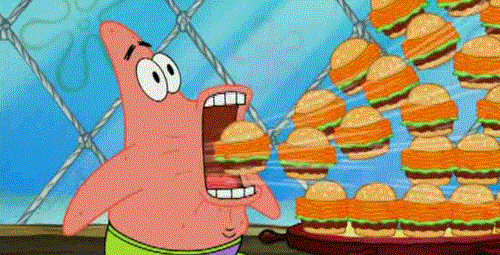 Photo: Tumblr[/caption]
At first, I thought the iftar was all inclusive. It was entrée, dinner and desert all in one. But over the next few weeks, I was to learn that this was not the case. Iftar is merely the beginning of a long night of eating,
Photo: Tumblr[/caption]
At first, I thought the iftar was all inclusive. It was entrée, dinner and desert all in one. But over the next few weeks, I was to learn that this was not the case. Iftar is merely the beginning of a long night of eating,  Photo: Tumblr[/caption]
The night begins with iftar then moves onto dinner, where the spread is just as impressive, with more food than I could ever dream of eating. Then of course after eating dinner you need something sweet, then it’s time for tea, more ‘snacks’, some more tea to ‘help you digest it’ and then
Photo: Tumblr[/caption]
The night begins with iftar then moves onto dinner, where the spread is just as impressive, with more food than I could ever dream of eating. Then of course after eating dinner you need something sweet, then it’s time for tea, more ‘snacks’, some more tea to ‘help you digest it’ and then 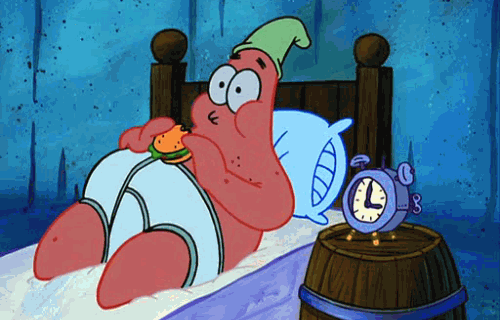 Photo: Tumblr[/caption]
Never send a girl to do a man’s job
On a separate note, we had another addition to the
Photo: Tumblr[/caption]
Never send a girl to do a man’s job
On a separate note, we had another addition to the  Photo: Tumblr[/caption]
We, girls, were all gathered in the lounge and soon regretted our desires to witness the evacuation. Cupboards were slammed, shoes were thrown and after a 10 minutes struggle, the noise ceased. There was a motionless black lizard lying on the ground and a room full of seven horrified girls. With the event fresh in our minds as we left the apartment that afternoon, Tatiana asked,
Photo: Tumblr[/caption]
We, girls, were all gathered in the lounge and soon regretted our desires to witness the evacuation. Cupboards were slammed, shoes were thrown and after a 10 minutes struggle, the noise ceased. There was a motionless black lizard lying on the ground and a room full of seven horrified girls. With the event fresh in our minds as we left the apartment that afternoon, Tatiana asked,

 Photo: Humay Waseem[/caption]
4. You can add some water or chicken stock to make it saucier and less dry. Whisk it around for three to four minutes and add the pasta to it (don’t forget to drain water from the pasta before adding it).
5. Mix it well so that each wagon wheel is soaking with and
Photo: Humay Waseem[/caption]
4. You can add some water or chicken stock to make it saucier and less dry. Whisk it around for three to four minutes and add the pasta to it (don’t forget to drain water from the pasta before adding it).
5. Mix it well so that each wagon wheel is soaking with and  Photo: Humay Waseem[/caption]
I loved how this appetising meal cost me only Rs350 and served four. Also please don’t fret if you do not have some of the ingredients mentioned above, all of them can be substituted (regular oil for olive oil, red onions for green onions and any other pasta for wagon wheel pasta). Also, you can try goat brains instead of minced meat. No, I kid, don’t even try that!
In the picture you’d notice that my croissants got a little burned, it’s only because I am trying to develop some anti-perfectionism habits.
Bon Appétit!
Photo: Humay Waseem[/caption]
I loved how this appetising meal cost me only Rs350 and served four. Also please don’t fret if you do not have some of the ingredients mentioned above, all of them can be substituted (regular oil for olive oil, red onions for green onions and any other pasta for wagon wheel pasta). Also, you can try goat brains instead of minced meat. No, I kid, don’t even try that!
In the picture you’d notice that my croissants got a little burned, it’s only because I am trying to develop some anti-perfectionism habits.
Bon Appétit!


 Emraan Hashmi. Photo: Publicity[/caption]
Kunal and Emraan, together, gave some great hits in the past, including
Emraan Hashmi. Photo: Publicity[/caption]
Kunal and Emraan, together, gave some great hits in the past, including  Humaima Malick. Photo: Publicity[/caption]
Deepak Tijori is back on the silver screen, after a hiatus, in a brief role. He performs decently and gives exactly what was expected from him. Kay Kay Menon and Paresh Rawal were the usual: detailed, faultless and a treat to watch in some scenes.
All the main characters in Raja Natwarlal are experienced and cannot be questioned on their performance potentials. The only new bird in the flock was Humaima Malick, and even she bagged (unofficially)
Humaima Malick. Photo: Publicity[/caption]
Deepak Tijori is back on the silver screen, after a hiatus, in a brief role. He performs decently and gives exactly what was expected from him. Kay Kay Menon and Paresh Rawal were the usual: detailed, faultless and a treat to watch in some scenes.
All the main characters in Raja Natwarlal are experienced and cannot be questioned on their performance potentials. The only new bird in the flock was Humaima Malick, and even she bagged (unofficially)  Photo: Publicity[/caption]
In totality, Raja Natwarlal has nothing novel or interesting to offer; a list of talented actors is wasted. I would rate it two out of five and I am being generous.
Photo: Publicity[/caption]
In totality, Raja Natwarlal has nothing novel or interesting to offer; a list of talented actors is wasted. I would rate it two out of five and I am being generous.

 Source: Tumblr[/caption]
2. The Un-settlers:
Source: Tumblr[/caption]
2. The Un-settlers:
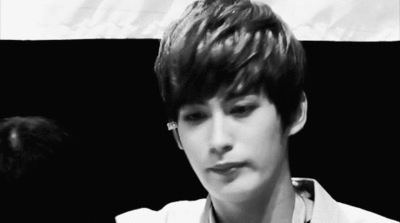 Source: Tumblr[/caption]
3. Thou shalt compare relentlessly:
Source: Tumblr[/caption]
3. Thou shalt compare relentlessly:
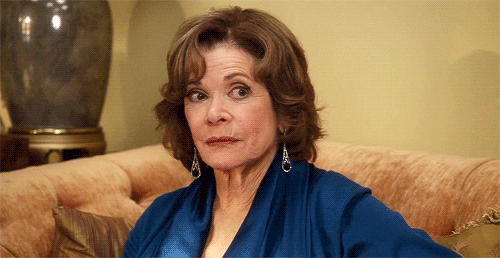 Source: Tumblr[/caption]
5. The Forgetful:
Source: Tumblr[/caption]
5. The Forgetful:
 Source: Tumblr[/caption]
6. The Homesick:
Source: Tumblr[/caption]
6. The Homesick:
 Source: Pandawhale[/caption]
7. The Assimilators:
Source: Pandawhale[/caption]
7. The Assimilators:
 Source: Imgur[/caption]
They hold on to the important values, which they grew up with, but are always open to new customs and ideas. They make new friends, travel and encourage relatives and friends back home to immigrate too! Yet their love for Pakistan doesn’t die. If anything, it gets stronger.
Source: Imgur[/caption]
They hold on to the important values, which they grew up with, but are always open to new customs and ideas. They make new friends, travel and encourage relatives and friends back home to immigrate too! Yet their love for Pakistan doesn’t die. If anything, it gets stronger.

 Photo: Na Maloom Afraad Facebook page[/caption]
Speaking about the premise of the movie, it swivels around the three main protagonists: Shakeel Bhai (
Photo: Na Maloom Afraad Facebook page[/caption]
Speaking about the premise of the movie, it swivels around the three main protagonists: Shakeel Bhai (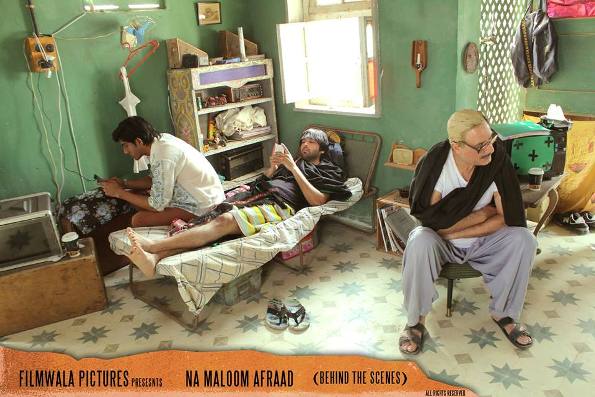 Photo: Na Maloom Afraad Facebook page[/caption]
In the acting department, all actors demonstrate their acting prowess sufficiently, especially Fahad and Mohsin. Fahad has transitioned seamlessly from the smaller screen of the drama industry towards the bigger celluloid screen of the cinema format.
Javed is, as usual, on point and
Photo: Na Maloom Afraad Facebook page[/caption]
In the acting department, all actors demonstrate their acting prowess sufficiently, especially Fahad and Mohsin. Fahad has transitioned seamlessly from the smaller screen of the drama industry towards the bigger celluloid screen of the cinema format.
Javed is, as usual, on point and 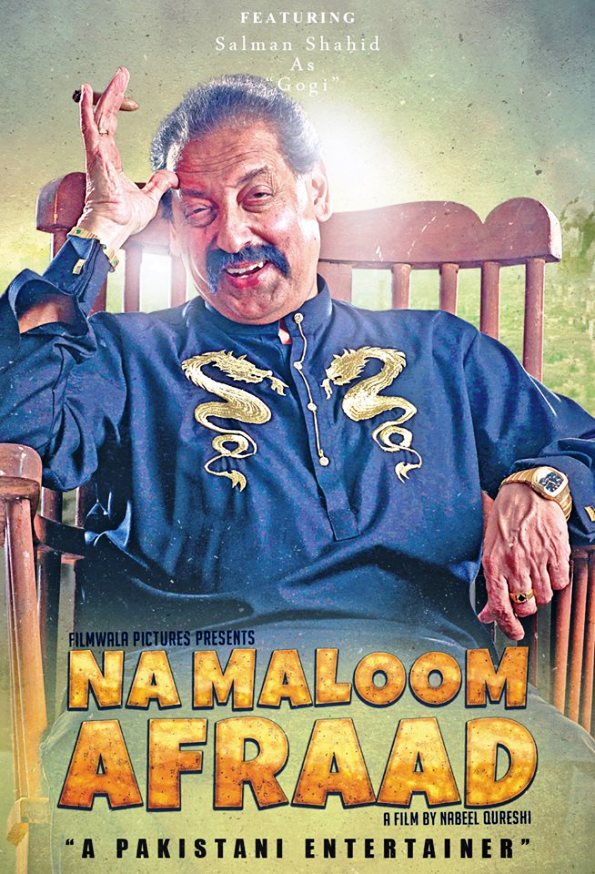 Photo: Na Maloom Afraad Facebook Page[/caption]
Ultimately, it is the trifecta (Javed, Fahad and Mohsin) that carries the movie competently on their shoulders because their chemistry is just amazing and they click and gel in with each other like three peas in a pod. Other cast members include Paras Masroor, Kubra Khan, Ali Rizvi and Nayyar Ejaz; they all hold their own in the limited on-screen time that they are given.
[caption id="" align="alignnone" width="536"]
Photo: Na Maloom Afraad Facebook Page[/caption]
Ultimately, it is the trifecta (Javed, Fahad and Mohsin) that carries the movie competently on their shoulders because their chemistry is just amazing and they click and gel in with each other like three peas in a pod. Other cast members include Paras Masroor, Kubra Khan, Ali Rizvi and Nayyar Ejaz; they all hold their own in the limited on-screen time that they are given.
[caption id="" align="alignnone" width="536"] Photo: Na Maloom Afraad Facebook page[/caption]
The director has intentionally opted to choose regular local Karachi landmarks and locations for shooting the bulk of the movie, instead of international exotic locales. Same is the case with shooting the songs of the movie. The subject of the story is such that showing outdoor and extravagant foreign location in large proportions will seem out of place and incompatible with the on-going theme of the movie. In particular, it will resonate well with
Photo: Na Maloom Afraad Facebook page[/caption]
The director has intentionally opted to choose regular local Karachi landmarks and locations for shooting the bulk of the movie, instead of international exotic locales. Same is the case with shooting the songs of the movie. The subject of the story is such that showing outdoor and extravagant foreign location in large proportions will seem out of place and incompatible with the on-going theme of the movie. In particular, it will resonate well with 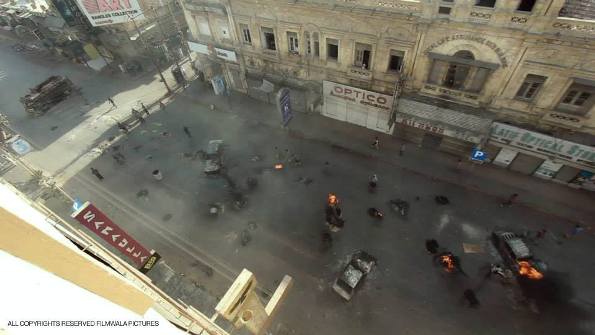 Photo: Na Maloom Afraad Facebook page[/caption]
In terms of the musical score of the movie, it will rival any Bollywood flick, as all the songs are catchy and melodious, especially the item song Billi in which Mehwish Hayat exhibits her dancing talent. She is simply scintillating, drop dead gorgeous and spectacular. Finally Pakistanis have an item song they can call their own, without going into the merits or the demerits of the culture of embedding an item song in a movie; it is a reality whether one likes it or not.
Instead of playing the usual
Photo: Na Maloom Afraad Facebook page[/caption]
In terms of the musical score of the movie, it will rival any Bollywood flick, as all the songs are catchy and melodious, especially the item song Billi in which Mehwish Hayat exhibits her dancing talent. She is simply scintillating, drop dead gorgeous and spectacular. Finally Pakistanis have an item song they can call their own, without going into the merits or the demerits of the culture of embedding an item song in a movie; it is a reality whether one likes it or not.
Instead of playing the usual  Photo: Na Maloom Afraad Facebook page[/caption]
It would be almost criminal (pun intended) to miss this one out.
Photo: Na Maloom Afraad Facebook page[/caption]
It would be almost criminal (pun intended) to miss this one out. 




 Jamshed Mahmood Raza. Photo: Operation O21 Facebook Page[/caption]
But like a roller-coaster that keeps climbing without a payoff, O21 fails to bring its foreplay to a satisfying conclusion. Eventually, O21 begins to resemble a
Jamshed Mahmood Raza. Photo: Operation O21 Facebook Page[/caption]
But like a roller-coaster that keeps climbing without a payoff, O21 fails to bring its foreplay to a satisfying conclusion. Eventually, O21 begins to resemble a  Photo: Operation O21 Facebook Page[/caption]
The poor and rather unintelligent second half of the film also weighs down the fairly interesting narrative. O21’s examination of the spy network between Pakistan and Afghanistan is quite absorbing, where most of the players are motivated by personal objectives rather than nationalism. The characterisation of Pakistani spy Kashif is a mixed bag however. On one hand I enjoyed how Kashif wasn’t presented as a squeaky clean military man, but on the other was disappointed that
Photo: Operation O21 Facebook Page[/caption]
The poor and rather unintelligent second half of the film also weighs down the fairly interesting narrative. O21’s examination of the spy network between Pakistan and Afghanistan is quite absorbing, where most of the players are motivated by personal objectives rather than nationalism. The characterisation of Pakistani spy Kashif is a mixed bag however. On one hand I enjoyed how Kashif wasn’t presented as a squeaky clean military man, but on the other was disappointed that  Ayub Khoso. Photo: Operation O21 Facebook Page[/caption]
Despite the glaring imperfections,
Ayub Khoso. Photo: Operation O21 Facebook Page[/caption]
Despite the glaring imperfections, 







